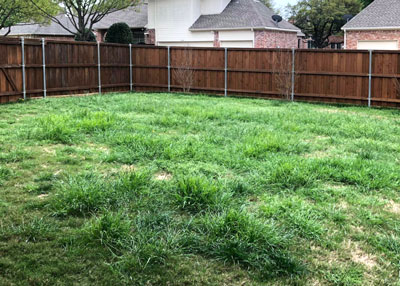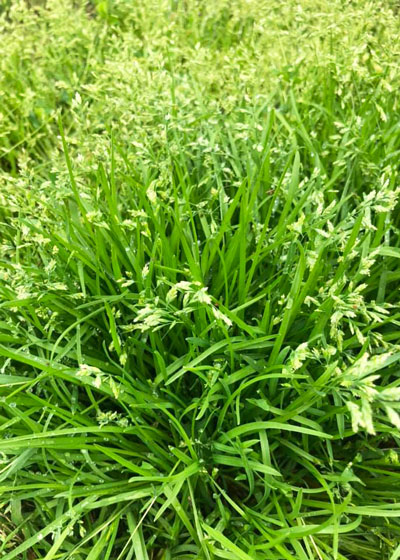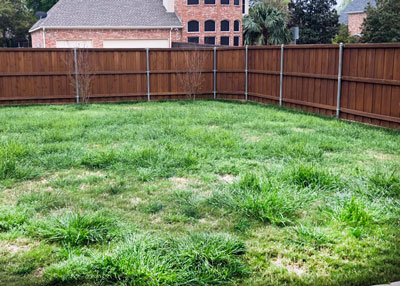Question of the Week – Number 2: March 26, 2020

“What is this weed, and what can I do to get rid of it?”
This question has come up several times daily on my Facebook page, in my emails and on my radio programs.
This is annual bluegrass (Poa annua). It’s a weed that’s well known clear across America.
Facts to know…
• Poa annua (annual bluegrass)
• Cool-season grassy weed that germinates in September and early October
• At maturity grows to be 4-6 inches tall and wide if unmowed, yet can withstand mowing as low as 1/8-inch.
• Did you know, for example, that it’s the grass that is used for the greens at the world-famous Pebble Beach Golf Club in California? Look it up!

• Beginning late winter, produces multitudes of fine-textured seedheads and thousands of seeds per plant.
• Your only way of controlling Poa annua is to prevent its germination in the first place. That requires application of a pre-emergent herbicide such as Dimension, Halts or Balan the last week of August or the first week of September.
• If you have it in flowerbeds or garden paths, you may be able to spot-treat with a glyphosate-only herbicide (no other active ingredients).

• Once it starts to sprout and grow with the first September rains there is nothing you can do to stop it.
• After its flurry of seedheads produced in March and April, annual bluegrass quickly dies out as temperatures in Texas climb into the high 80s and 90s.
